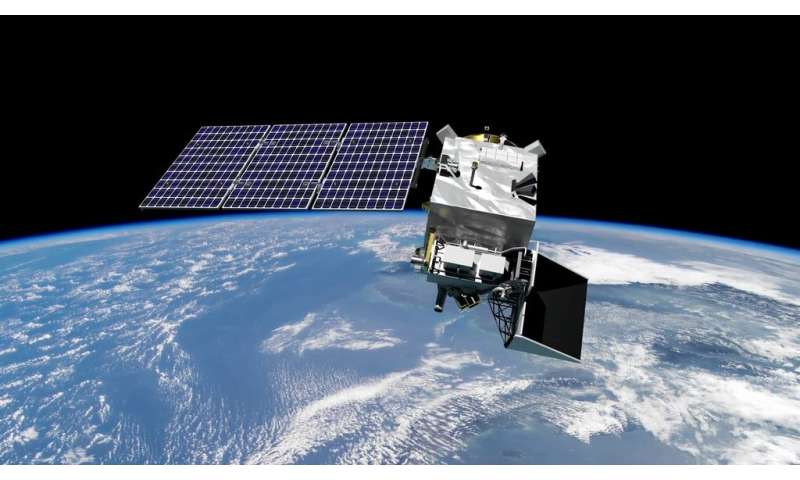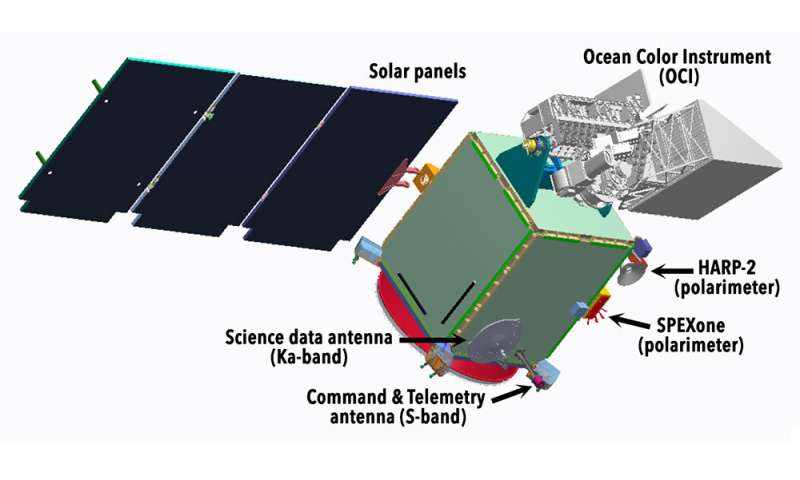Dutch aerosol instrument on NASA Earth ecosystem satellite receives green light

The newly developed Dutch space instrument for aerosol measurement SPEXone is awarded € 7 million from the Netherlands Space Office. This completes the funding that is needed for the production of the instrument. Onboard NASA satellite PACE (launch 2022), SPEXone will map the amount and properties of aerosols with unprecedented accuracy, providing new valuable data to climate scientists.
'One of the biggest gaps in our knowledge of the contemporary climate is that we don't know exactly how many aerosols there are in the atmosphere, what properties they have and what their precise effect is on radiation and cloud formation,' says Otto Hasekamp of SRON, principal investigator for SPEXone. The instrument measures aerosols—small dust particles in the air, such as soot, ash and desert dust, also known as particulates. They have a major influence on air pollution and climate change, but their precise role is insufficiently known. For example, most aerosols reflect light and have a cooling effect on the Earth, but they can also have a warming effect due to absorption.
Collaboration
SPEXone will be developed by a collaboration between SRON Netherlands Institute for Space Research and Airbus Defense & Space Netherlands, supported by experts from TNO and Dutch SME's. 'With this investment, The Netherlands becomes a partner in a leading NASA mission that addresses important questions about climate,' says Hasekamp.
Distinguishing aerosols
'The compact SPEXone instrument (less than 10 kg, red.) gives researchers unprecedented insight into the properties of aerosols, such as size, composition, shape and absorbent capacity,' says Hasekamp. The spectropolarimeter accurately maps out the properties that cause warming or cooling by measuring the extent to which sunlight is polarized when it has been reflected by the Earth's atmosphere in the direction of the PACE satellite.

PACE observatory
The NASA observatory PACE (Plankton, Aerosol, Cloud and ocean Ecosystem) studies the various factors that affect the climate. PACE harbors three scientific instruments: main instrument OCI (Ocean Color Instrument), aerosol polarimeter SPEXone and cloud polarimeter HARP-2 (Hyper-Angular Rainbow Polarimeter).
Funding
SPEXone is made possible by a Dutch investment of 14 million euros, including investments by the Netherlands Space Office of €2 million and €7 million euros. Other funding comes from the Netherlands Organization for Scientific Research (NWO), SRON Netherlands Institute for Space Research and Airbus Defence & Space Netherlands. In addition to the OCI instrument, NASA provides the satellite, the integration of the instruments on the satellite, the launch and the infrastructure on the ground. The HARP-2 instrument is provided by University of Maryland, Baltimore County (UMBC).
Tropomi
It is not the first time that The Netherlands is an important supplier of technology for atmospheric measurements from space. The TROPOMI instrument on the Sentinel 5 Precursor satellite from the EU and ESA was also the result of a Dutch effort. The project partners within SPEXone use knowledge and expertise that they have gained from TROPOMI.
SPEXone is being developed by a Dutch consortium consisting of SRON Netherlands Institute for Space Research and Airbus Defence and Space Netherlands, supported by opto-mechanical expertise from TNO. SRON and Airbus DS NL are responsible for the design, manufacture and test of the instrument. The scientific lead is in the hands of SRON. SPEXone is a public-private initiative, funded by the Netherlands Space Office (NSO), the Netherlands Organization of Scientific Research (NWO), SRON and Airbus DS NL.
Provided by SRON Netherlands Institute for Space Research